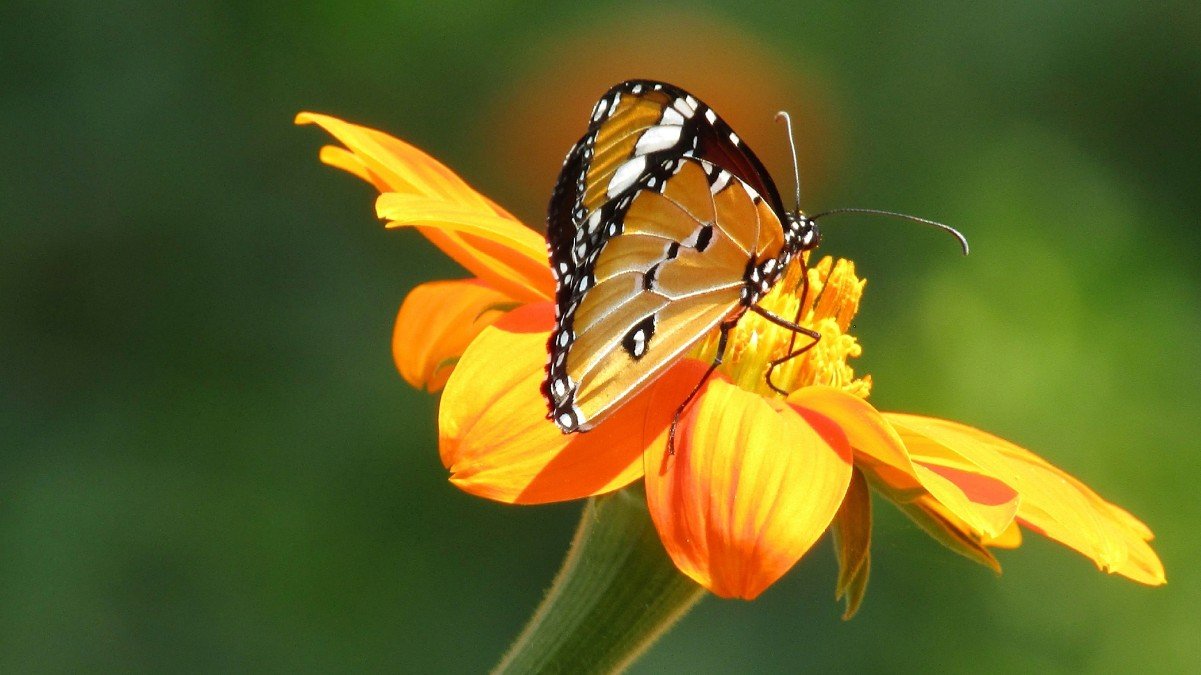Why Are Pollinators in Decline?

Pollinators are an important part of ecosystems and are often overlooked. Insect pollinators are particularly at risk because people aren’t very fond of or aware of bugs, especially beetles, flies, and moths.
The decline of pollinators has drastic implications for the environment. Plants across the world depend on pollinators to reproduce.
Which pollinators are in decline?
There are many different types of pollinators, which we can categorize into insect pollinators and vertebrate pollinators.
Insect pollinators include:
- Bees
- Butterflies
- Ants
- Flies
- Moths
- Flower beetles
- Wasps
While vertebrate pollinators include bats, birds, lizards, rodents, lemurs, monkeys, and possums.
Most people are aware of bumblebees and honeybees in their importance as pollinators. This is because a lot of research has gone into their worth as pollinators, and how much they’re declining.
According to the Florida Museum, there are over 4000 species of bees, 750 species of butterflies, and thousands more species of wasps, flies, and beetles in the United States that pollinate 75% of US flowering plants.
The Royal Horticultural Society believes there to be more than 1500 pollinating insect species in Britain.
Over 800 native species of bees are present in Canada, and Australia has over 2000 native bee species.
There’s no way to tell just how many pollinators are present in the world, but these amounts give us a good indication of the minimum amount.
If a country’s bee population is halved it could affect up to or even more than a quarter of native plants. This can then affect other pollinators who rely on those plant species for habitats and food.
Most pollinators in decline are moths and butterflies, who are affected primarily by habitat loss driven by human land use.
It’s difficult to track the decline of exact species or areas – when the effects are seen, it’s often too late to make a difference.
Because honeybees are maintained by beekeepers, honeybees aren’t under threat of decline in many places, but colony collapse is a major threat. Colony collapse happens largely due to pests, diseases, pesticide poisoning, stress, and inadequate food or nutrition.
The biggest threats to pollinators that cause decline are:
- Habitat loss (usually due to construction) affects forage, nesting, or breeding sites
- Decline of local plants or their quality
- Disruptions to breeding and nesting sites
- Climate change and pollution
- Pesticides – especially insecticides
- Parasites and pests
- Disease
More research needs to be undertaken to determine how much decline is underway and how best to prevent it.
What is causing a decline in bees and butterflies?
Most data on population decline is available for bee and butterfly species.
According to the European Parliament, around a third of bee and butterfly populations are declining in Europe.
Environmental pollution, land use and loss of habitats, climate change, pesticide use, intensive agricultural management, and invasive species and diseases are the main factors in this decline.
4 out of 5 crops and wildflower species in the EU depend on insect pollinators to reproduce, some more than others. Losing these valuable pollinators at any level affects food security and biodiversity.
A study into the widespread losses of pollinating insects in Britain found evidence of a decline in “a large proportion of pollinator species in Britain between 1980 and 2013”.
They found that agri-environmental schemes can promote pollinator populations on farmland, but more methods are needed to restore habitat and food resources for pollinators in the wider environment.
It’s thought that the number of bee species has declined by 40% in the UK and 60% in the Netherlands based on available data. The Xerces Society for Invertebrate Conservation Red List includes many pollinating insects across Canada, Mexico, and the United States.
How does pollution affect pollination?
While most threats to pollinators are easy to understand – of course, disruptions to breeding sites will result in decline because the pollinators won’t feel safe to breed – it’s important to discuss the effect of pollution on pollinators.
In Bangalore, researchers found that the native giant honey bee population was less present in the city than outside it. They looked into how pollution might be affecting the species and found that, despite the number of plants available in the city, pollution affected the bees physically, behaviorally, and genetically.
Pollution was associated with “how long the bees lived, how often they visited flowers, their heart rate and their respiration rate” as well as genetic differences. The genes affected were linked to stress, nutrition, immunity, defense, and other behavioral traits.
A study into the impacts of pollutants on pollinators in road verges recorded over 46 plant species and 23 hoverfly, 18 bee, and 7 butterfly species in their surveys. They found that the densities of pollinators and number of flower visits decreased closer to the road edges.
They observed that simulated traffic noise didn’t have a negative effect on pollinator density, but turbulence did.
Other studies have found that air pollution affects pollinators through scent.
Pollution-modified scents on plants can confuse bees, resulting in a decrease in pollination efficiency and bees taking more time to forage. It’s thought that insect pollinators use the scent of flowers carried in the air to find flowers to forage from, and air pollutants like ozone can break down hydrocarbons released by plants, which can create more pollutants.
